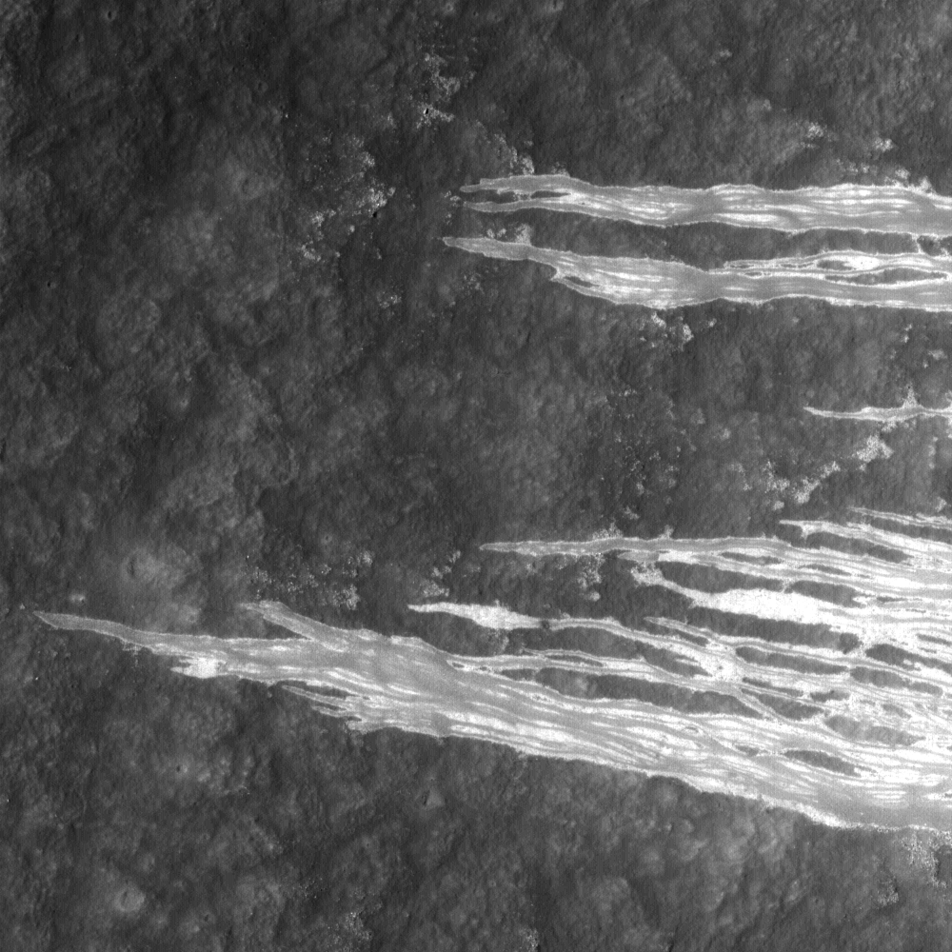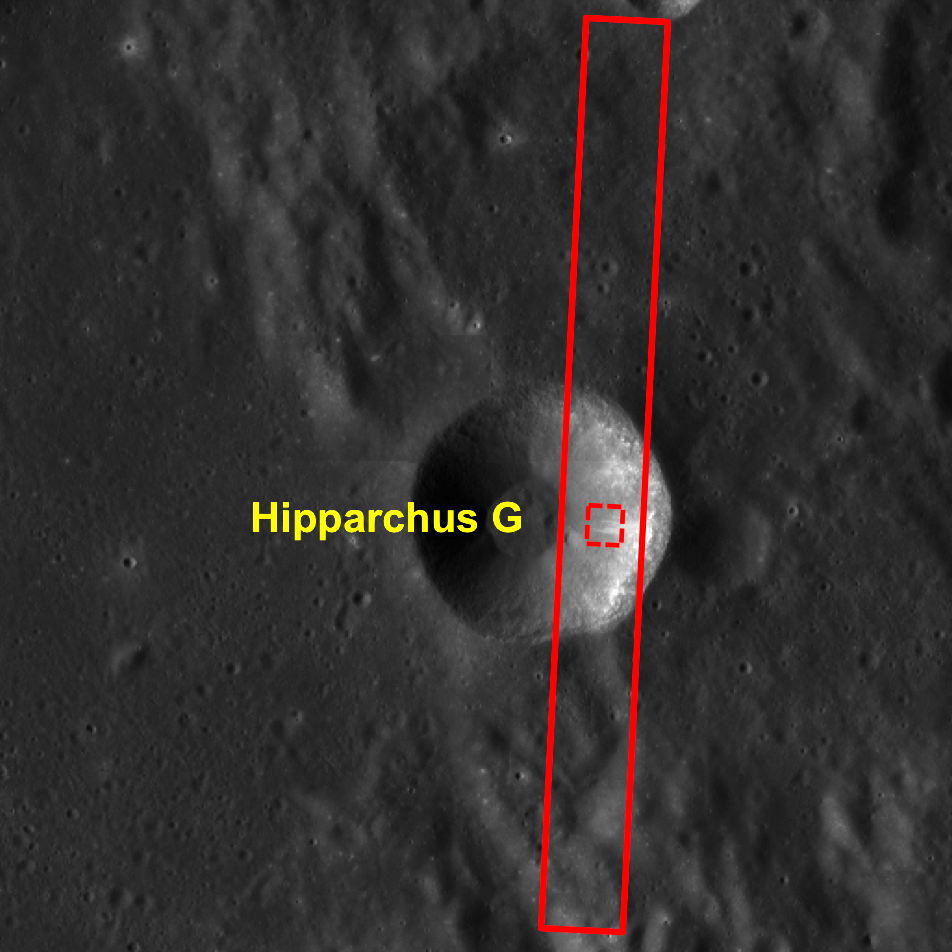
Hipparchus G is a high reflectance crater with a diameter of 13.7 km, it formed on the rim of the much older and degraded Hipparchus crater. While these streamers may look like mudslides, they are actually dry solids that underwent fluidized flow; these features are called debris flows and are seen in many craters on the Moon.
Why do these flows look like tendrils? As the debris was flowing downhill, in some places it encountered obstacles, such as a rougher surface or large boulders. If the flow had enough energy it found its way around the obstacle, as seen by the curved path taken by these streams, if the obstacle was too large and the debris was too thin, it came to a halt.
These flows really stand out from the rest of the crater wall material because they have a higher reflectance. Higher reflectance indicates that this material has been exposed to less space weathering than the crater wall, so this flow happened long after the formation of this crater.

Explore these whimsical features and more below:
Related Posts:
Moon or Abstract Expressionism?
Rock avalanche in Robinson crater
Published by Raquel Nuno on 3 June 2014